
Yesterday’s post about Apple CarPlay and connected cars is just part of the story that’s been bubbling up over the last 15 years.
Seemingly since carmakers started installing radios in the dashboards of cars about a century ago, the radio and automotive industries were joined at the hip. Most people got used to sitting behind the wheel and turning on that radio – a habit that most certainly worked for the burgeoning broadcasting business. And while automakers worked to modernize many aspects and features over the decades – power windows, convertibles and sunroofs, automatic transmissions, etc. – the basics of the in-car radio remained constant.
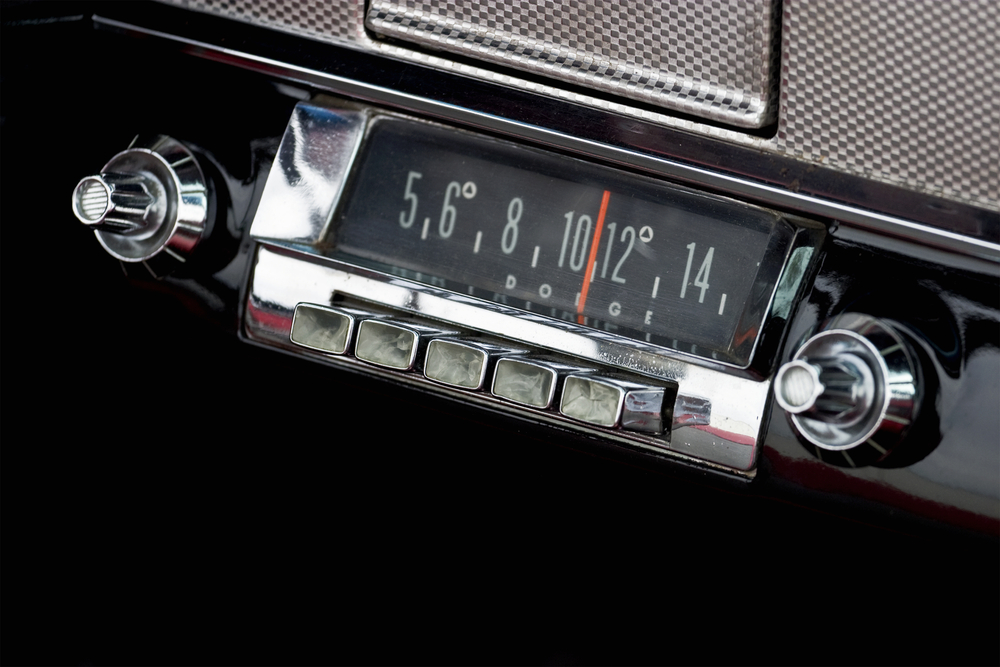 Two knobs, six presets – or thereabouts. Yes, FM radio started to make its way in during the early 1970s, and in sequence, 8-track players, cassette decks, and CD slots and multi-disc changers followed. But it was mostly about drivers and passengers listening to their favorite radio stations, and most people developed a “punching order,” starting with their favorite and then working their way down the list using those presets to navigate their choices.
Two knobs, six presets – or thereabouts. Yes, FM radio started to make its way in during the early 1970s, and in sequence, 8-track players, cassette decks, and CD slots and multi-disc changers followed. But it was mostly about drivers and passengers listening to their favorite radio stations, and most people developed a “punching order,” starting with their favorite and then working their way down the list using those presets to navigate their choices.
No doubt about it. Radio was “king of the car” all those years.
But has its hold on listening supremacy slipped especially given how media choices in vehicles have expanded?
A week or so ago, I read the same stories you did in the industry trades covering Westwood’s packaging of Edison’s latest “Share of Car” study. Some of the coverage used that royalty term in regard to radio’s continued dominance of what drivers (and passengers) listen to while they’re on the go.
Lovingly (and craftily) put together by Pierre Bouvard (pictured below), the data is compelling. I would encourage you to download, read it…and use it. It’s loaded with great data that fully support marketers continuing to rely on using broadcast radio as a key ingredient in their media mix.
While there are many charts in the report – and many are compelling – the one below jumped out at me, possibly because I heard broadcasters quoting the 86% datapoint you see highlighted:
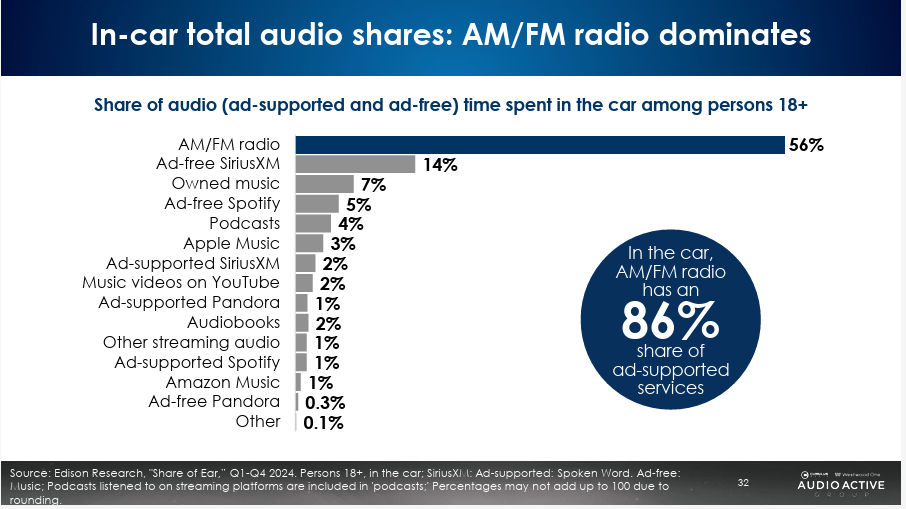
The bar at top, depicting radio’s 56% “share of car,” as Edison put it, is the actual usage percentage of all audio. The circled 86% refers to AM/FM radio’s share when marketers are only seeking media where they can actually run commercials, thus the reference to “ad-supported services.”
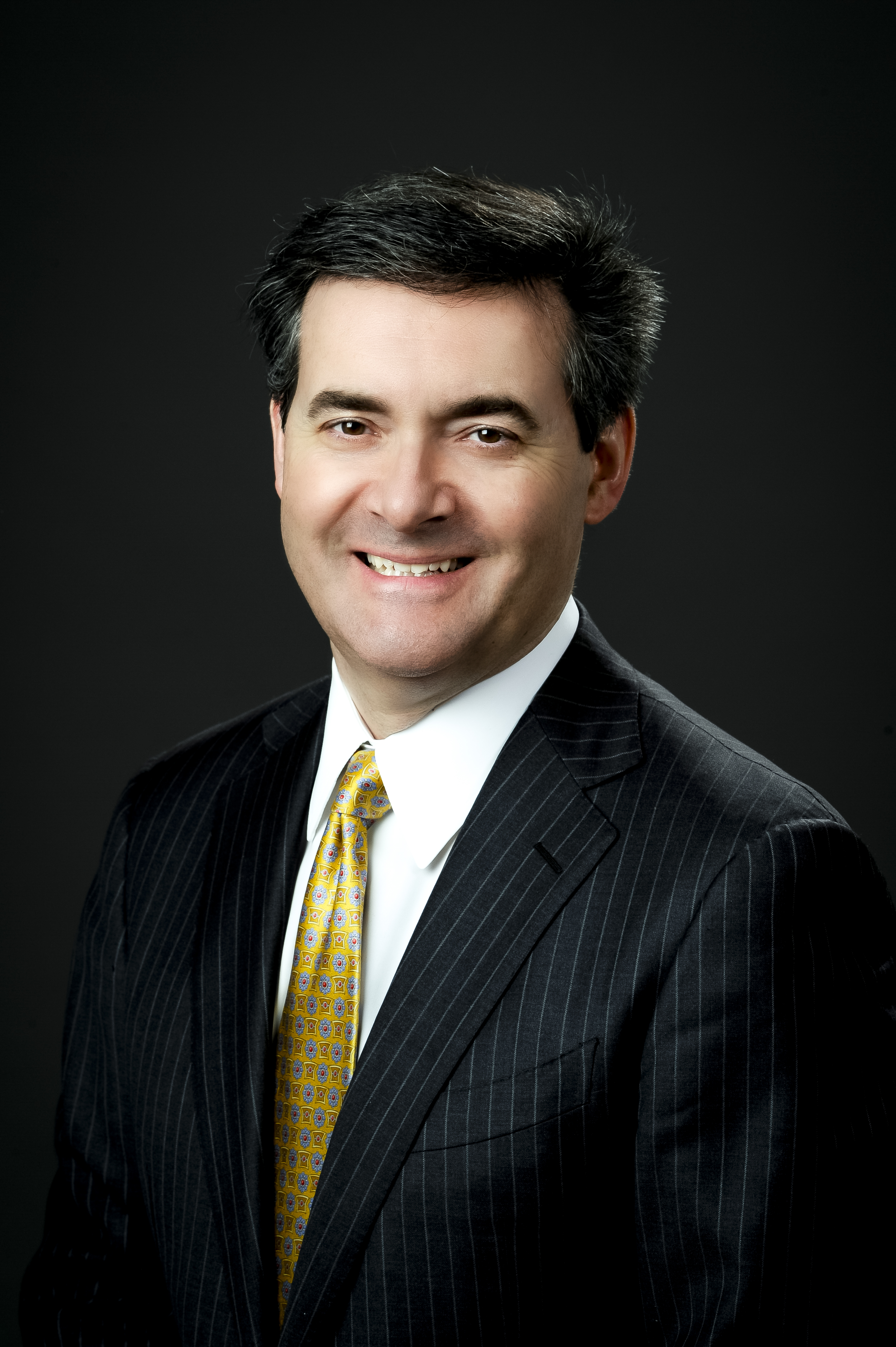
But the sources that drivers and passengers opt for – the 56% – how do we evaluate that? And how has it changed over time? I’m a good researcher, but true confession – I did not do a deep dive into the Edison Research website to unearth the last many years of “Share of Car” studies.
I used our Techsurveys instead. And the story it tells about the slippage of radio’s in-car crown is telling…and concerning. Unlike Edison’s data, Techsurvey’s respondents are mostly core radio listeners. When you see “a disturbance in ‘the force’,” it’s usually worth taking note of. After all, when the medium’s uber P1s get a bit wobbly, it’s a concern.
On the brand new Techsurvey 2025 (not presented yet), you can see the trajectory of AM/FM consumption in the car going all the way back to 2018. Like a slow leak, we’ve watched radio’s hold on in-car usage gradually fall:
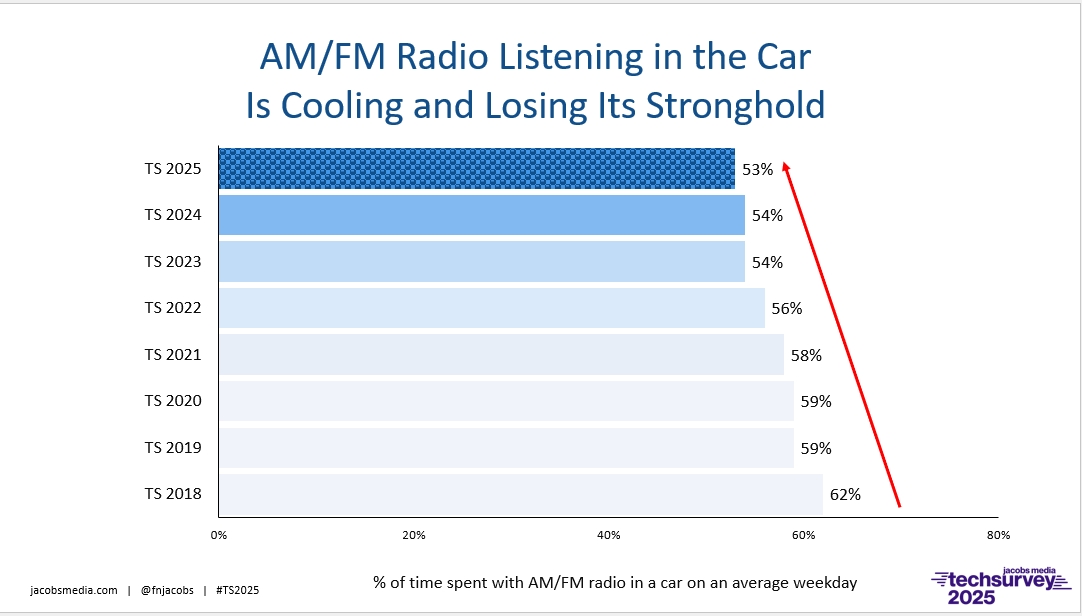 Yes, it’s a trend. And for those of you keeping score at home, you’re looking at a drop of nearly 17% across these eight annual studies. TS 2025 has ended up about where Edison’s new data pegs radio’s current “share of car.” But it’s the journey of how we got there that’s worthy a few of our brain cells to understand what’s going on here – and can we expect these in-car consumption levels to continue dropping?
Yes, it’s a trend. And for those of you keeping score at home, you’re looking at a drop of nearly 17% across these eight annual studies. TS 2025 has ended up about where Edison’s new data pegs radio’s current “share of car.” But it’s the journey of how we got there that’s worthy a few of our brain cells to understand what’s going on here – and can we expect these in-car consumption levels to continue dropping?
So, I’ll share my theory with you. While the “radio trolls” will pin the blame on corporate greed, Wall Street pirates, rampant consolidation, bloated commercial breaks, top-down brain numbing programming, and lame consultants – all plausible theories BTW – I think the underpinning explanation is bigger than all those obvious deficits. And the real culprit may come down to the revenge of the OEMs, that insider term we use for automakers.
Starting with the Ford SYNC system introduced to the world in January 2007 at the North American International Auto Show in my hometown of Detroit by their CEO Alan Mulally. Not long after, he delivered his first keynote at CES, the year we met the Ford team and connected our mobile apps company, jacapps, with their developers.
SYNC – flaws, glitches, clunkiness, and all – began the “connected car” period the industry continues to be neck-deep in now. Yesterday’s blog post tracked Apple CarPlay’s (and Android Auto’s) meteoric rise in dashboards. But it all started with Ford’s ambitious system and the impact it has had throughout the industry – including on broadcast radio usage.
The automakers realized consumers get more excited by their media options in the cars and trucks they drive, then they truly care about the transmissions, braking systems, or safety features in the vehicles they market. You can get a flavor for this by just paying attention to their marketing. Here’s a random Chevy commercial I pulled, typical of the marketing emphasis these days:
This is why virtually every vehicle that rolls off assembly lines in the U.S., Germany, Japan, South Korea, and China feature a dashboard screen(s) and a growing list of media choices. Whether the vehicles are entry-level or the most expensive sold, they’ve likely got an iPad-looking screen and apps – all of which have at least an indirect impact on traditional broadcast radio listening.
It boils down to this:
The more and better media tech in cars, the less time drivers are likely to spend listening to local AM/FM stations.
Below, I combined the data slide I showed you above with the percentage of TS 2025 respondents who now drive “connected cars” with full-featured media systems. The relationship is striking:
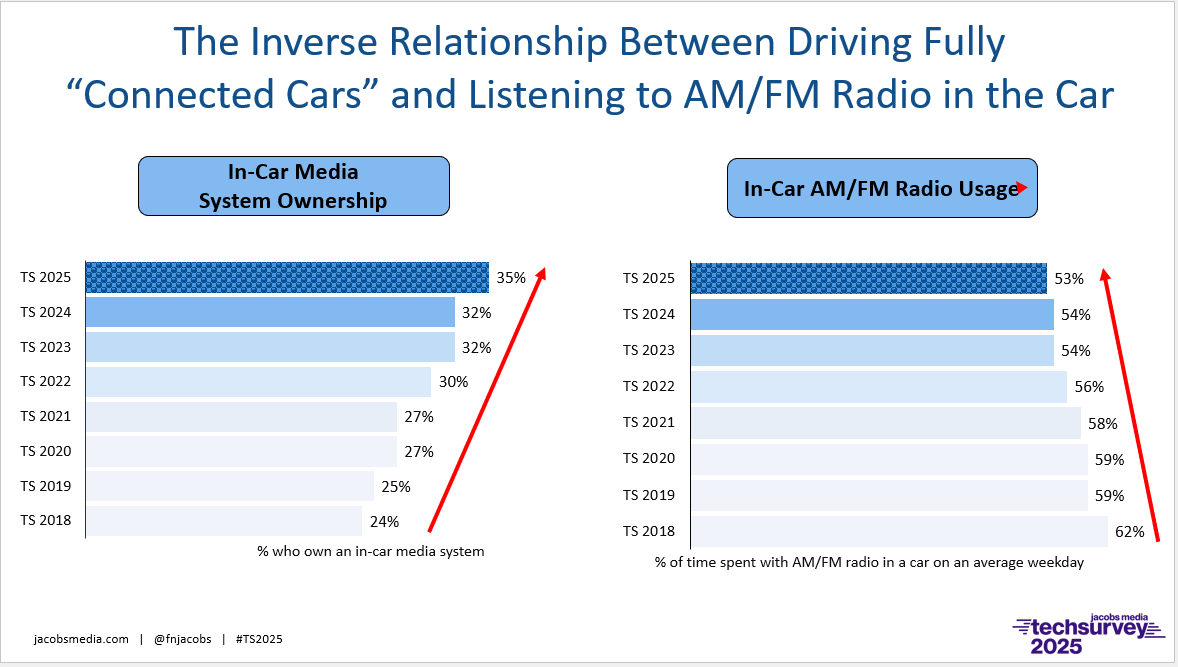
And it’s noteworthy the “connected car” ownership reached an all-time high in this year’s study, while conversely, the percentage of in-car AM/FM consumption dropped to an all-new low.
Next week, Paul and I will join Mike McVay, Joe D’Angelo, and Steve Newberry for a webinar (register for it here) I think you’ll appreciate. We’ll be breaking down Quu’s new “2025 In-Vehicle Visuals Report,” which breaks down how the 100 most popular vehicles in the U.S. are equipped in the dash. Radio broadcasters cannot control whether Apple CarPlay is now included in dashboards or whether the TuneIn app is now native on a vehicle’s home screen. But we can control how radio looks in cars and trucks, EVs and internal combustion models, and in a Nissan Versa (under $19,000) or the Bentley Bentayga SUV (over $203,000).
Let’s not forget we also control how radio sounds – how local we are, whether our personalities and hosts connect with listeners, and whether we’re engaged with our communities of license.
The Quu webinar all about dashboard visuals and in-car radio strategies is Wednesday, April 2, at 3pm ET. Register here. – FJ
- What If Radio Tried Something Right Out Of Left Field? - May 9, 2025
- Why Radio PDs Are A Lot Like NBA Coaches - May 8, 2025
- Memo To Radio: We Have Met The Enemy And It Is… - May 7, 2025



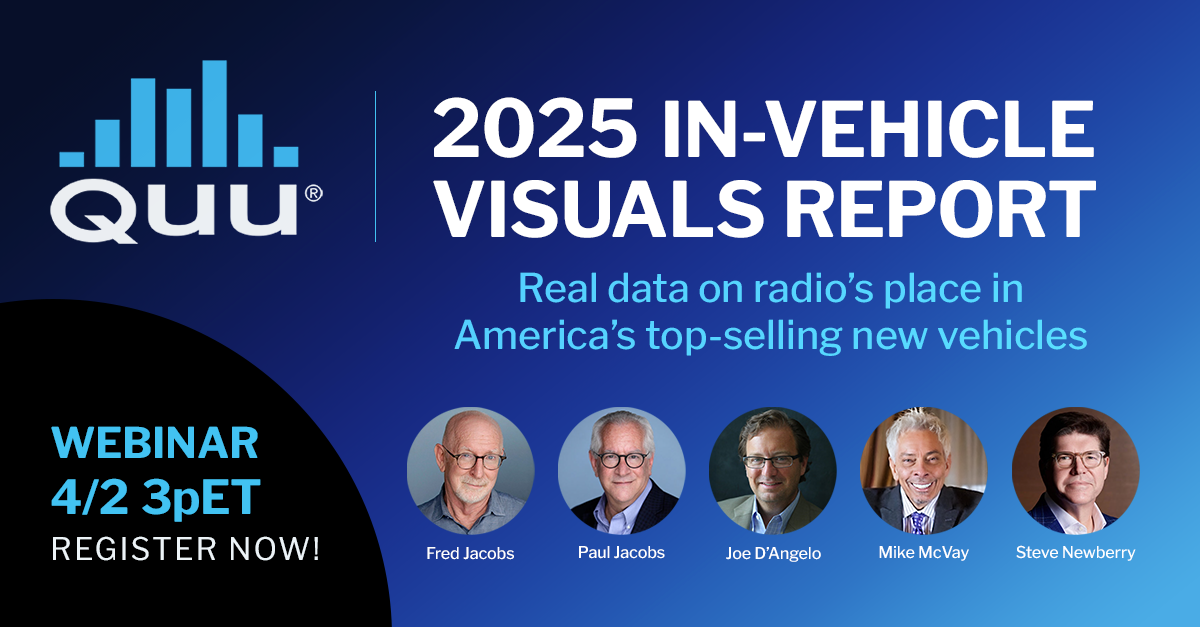
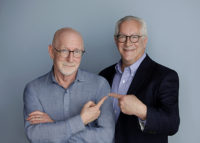
Support Great Radio Reception in All Cars. Essential, Plain, Simple, Licensed Service and Content. Thank you Fred and Pierre! http://www.broadcastideas.com
Right there with you, Clark.
Forget about the “punching order”…
Sometimes, there’s not even any punching going on at all.
The podcast or song I paused in the house…
Starts playing when I get in the car.
Bluetooth—Underrated as a factor in media consumption
I hope I’m still able to comment here because I set my “pre-sets” in order from low to high and not by using favorite as a criteria. I never even considered that option. It must be a Detroit thing. And Dino Cicarelli still “xxx” he said screaming from the 2nd balcony at the old Chicago Stadium.
All kidding aside. I still think it goes back to programming and the PPM. If you have good programming (content these days) people will come. But with the PPM and the 2 long stop sets an hour it turns off this listener. Stations may have more data but at what price?
Radio had a good thing with HD Radio. This is the first car I’ve ever had with it. There are a couple of subs that I enjoy listening to. The downside for the stations there are no commercials (and no “dj” either). But I think that ship has already sailed. And because there is very little equipment to listen to it in the home.
Has there ever been any thought given to programming the subs with a national network? You have a classic rock station as the main station and other flavors of it as the subs. Don’t the christian stations do this with their HD subs? One of the stations here in Chicago (taking over the dial position of one the great FM rockers) seems to do this with 3 or 4 subs. I understand that they are not advertiser supported so the business model is different.
But I think Marty hit on something big with Bluetooth. In fact that may have even hit the nail on the head.
For HD subchannels, in a way, it might come down to what’s considered a “national network”. There’ve been a good number of cases where a larger group owner pipes in a format for use on the subchannels of some of its stations: For example, when iHeart was pushing Evolution (then later Pride Radio), it was largely on HD subchannels and online–with some of that perhaps inspiring (then being in reaction to) what Entercom/Audacy did with Channel Q.
Regarding a national network across HD2s and 3s, Eric’s explanation is correct (of course). But few broadcasters really consider the potential of HD Radio in the marketplace because of a lack of consumers who can listen. The only reason why today’s subchannels are commercial-free is that broadcasters have not really taken this technology seriously.. What is the point reached where broadcasters will embrace HD Radio. What does “critical mass” mean on the HD Radio platform? It’s a good question radio broadcasters have grappled with for years. Thanks for the comment (no matter how your presets are ordered!).